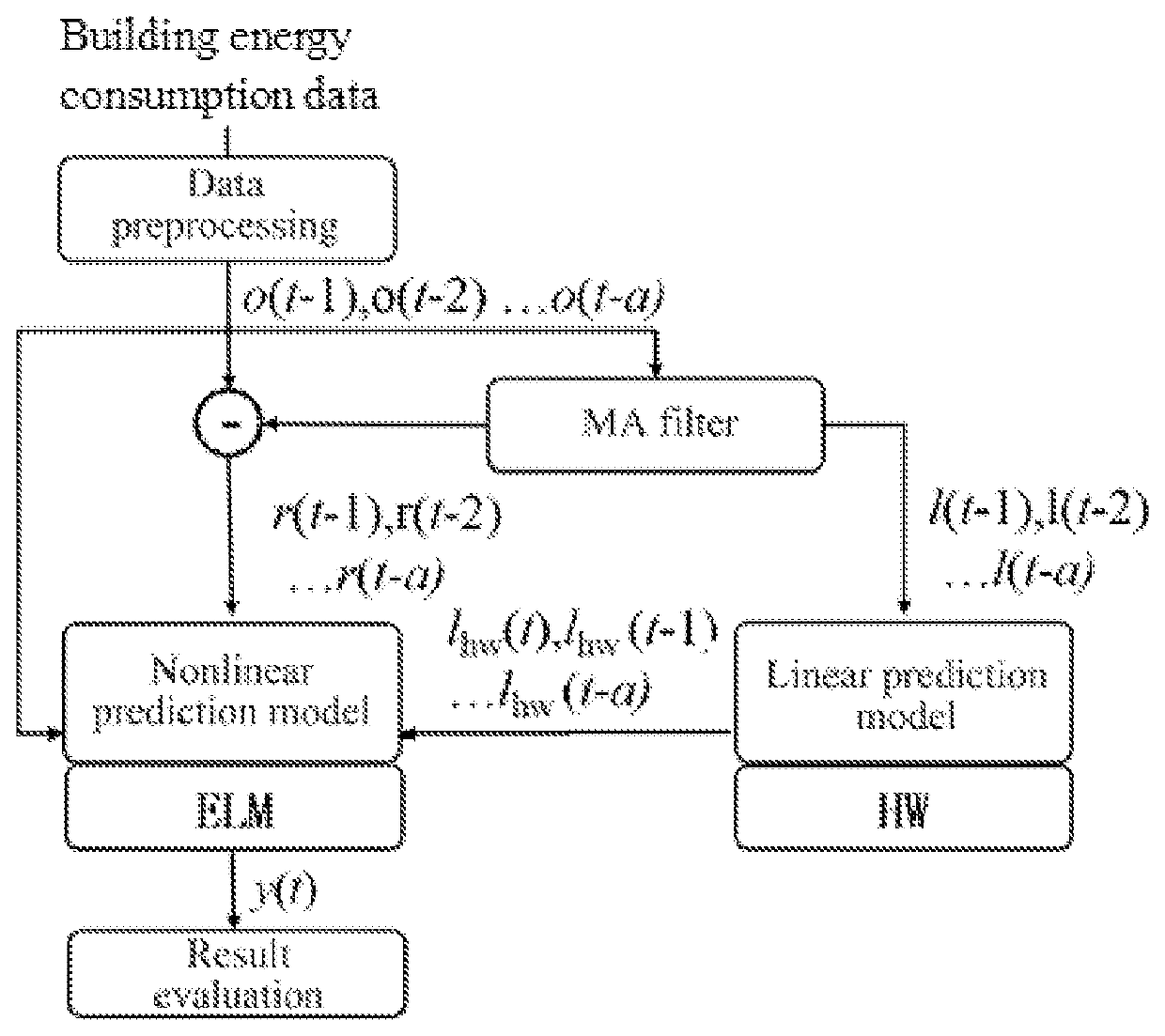Method and system for predicting building energy consumption based on holt-winters and extreme learning machine
a learning machine and building energy technology, applied in the field of environmental protection and energy, can solve the problems of large and complex datasets, difficult to obtain, and inability to accurately predict energy consumption, and achieve the effects of improving prediction accuracy, increasing training speed, and effectively reducing the size of training sets
- Summary
- Abstract
- Description
- Claims
- Application Information
AI Technical Summary
Benefits of technology
Problems solved by technology
Method used
Image
Examples
embodiment 1
[0031]As shown in FIG. 1, this embodiment provides a method for predicting building energy consumption based on HW and ELM, including the steps of:
[0032]S1: constructing a building simulation model based on actual operation parameters of a building to obtain an original energy consumption data set of the building;
[0033]S2: decomposing the original energy consumption data set to obtain a linear energy consumption data set and a nonlinear energy consumption data set;
[0034]S3: performing prediction on the linear energy consumption data set by using a trained HW model to obtain a linear energy consumption prediction result; and
[0035]S4: inputting the nonlinear energy consumption data set, the original energy consumption data set, and the linear energy consumption prediction result into a trained ELM model to output a building energy consumption prediction value of the building simulation model.
[0036]In the step S1, the actual operation parameters of the building include but are not limi...
embodiment 2
[0049]According to this embodiment, a system for predicting building energy consumption based on HW and ELM is provided, which may include:
[0050]a data collection module configured to construct a building simulation model based on actual operating parameters of a building to obtain an original energy consumption data set of the building;
[0051]a decomposition module configured to decompose the original energy consumption data set to obtain a linear energy consumption data set and a nonlinear energy consumption data set;
[0052]a first prediction module configured to perform prediction on the linear energy consumption data set by using a trained HW model to obtain a linear energy consumption prediction result; and
[0053]a second prediction module configured to input the nonlinear energy consumption data set, the original energy consumption data set and the linear energy consumption prediction result into a trained ELM model to output a building energy consumption prediction value of the ...
PUM
 Login to View More
Login to View More Abstract
Description
Claims
Application Information
 Login to View More
Login to View More - R&D
- Intellectual Property
- Life Sciences
- Materials
- Tech Scout
- Unparalleled Data Quality
- Higher Quality Content
- 60% Fewer Hallucinations
Browse by: Latest US Patents, China's latest patents, Technical Efficacy Thesaurus, Application Domain, Technology Topic, Popular Technical Reports.
© 2025 PatSnap. All rights reserved.Legal|Privacy policy|Modern Slavery Act Transparency Statement|Sitemap|About US| Contact US: help@patsnap.com

